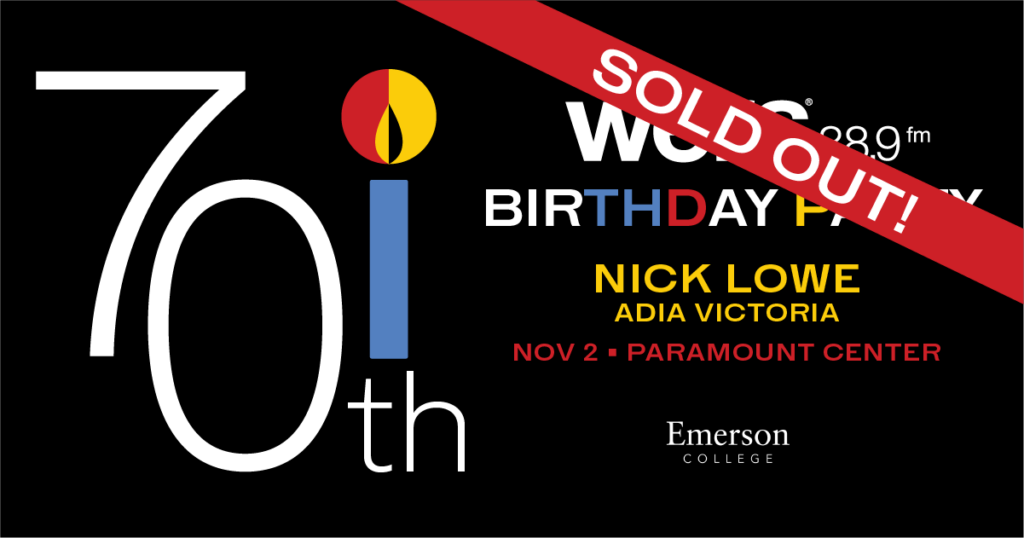
By Tatum Jenkins, Music Coordinator, and Nora Onanian, Web Services Coordinator
In celebration of Black History Month, we are excited to bring back our Vault of Soul series. Step inside the vault to discover the life and legacy of some of the world's greatest soul artists, both past and present. Every Thursday of February there will be a new artist spotlighted. Continue reading to take a deep dive into the life and career of Frankie Lymon.
BIOGRAPHY
EARLY LIFE & THE SUCCESS OF THE TEENAGERS
Frankie Lymon was born in Harlem, New York on September 30th, 1942, and at only the age of twelve, began to pursue his musical career. Lymon started out singing in a doo-wop group called the Coupe De Villes, which then turned into the Premiers and then finally the Teenagers. They skyrocketed to fame after the release of their first single hit, “Why Do Fools Fall in Love.” The Teenagers released a few other hits over the next year (“I Want You to be My Girl,” “I Promise to Remember”), but broke up from tensions while on tour in Europe in 1957.
USING MUSIC TO BRIDGE A DEEP-ROOTED RACIAL DIVIDE
That same year, as Lymon began to pursue a solo career, he appeared on Alan Freed’s ABC television show The Big Beat. In a live episode of the program, Lymon was seen dancing with a white girl. The interracial pairing stirred up viewers, especially in the South, and eventually led the network to cancel the show altogether.
“The Big Beat” was simple in nature — it showed live performances and a mixed room of teenagers dancing along — but for the time, it was making strides in bridging racial disparities. Freed often gave a platform for Black musicians to be heard and appreciated by a wide audience, an opportunity to expand their careers that wasn’t offered much elsewhere.
Lymon, too, through his music, was helping bridge this divide and bring people together, but unfortunately for some, it was still too soon.
FRANKIE LYMON’S SOLO CAREER & TRAGIC DEATH
Following this controversial performance and also partly because his distinctive falsetto had changed with age, Lymon struggled to make his solo career work. His sales slowly declined. Around this time, his heroin addiction began and his label ended his contract with him, eventually leading him to go to rehab. For the next four years, Lymon failed to secure deals until 1968, when he signed to Big Apple. He recorded two songs for them, but then tragically died at 25 of a heroin overdose. Those singles released later that year, and in 1998, they made a movie inspired by Lymon, titled Why Do Fools Fall in Love.
WHO INFLUENCED FRANKIE LYMON
During his childhood, both of Frankie Lymon’s parents, Jeanette and Howard Lymon, were a part of the gospel group the Harlemaires, likely fostering his early connection with music. Along with his brother, Frankie Lymon sang with the Harlemaire Juniors.
Later, in 1954, he drew inspiration when he saw a local doo-wop group called the Coupe De Villes at his school talent show. After becoming friends with the lead singer, he joined the group which eventually led to his recognition and fame.
Though more financially than musically, someone else that played a significant role in Frankie Lymon’s life was a man from Columbus, Georgia named Dennis Jackson. Lymon, who had worked grocery jobs to help his family make ends meet since the age of ten, was able to set off his music career largely in part because of Jackson’s donation of $500.
WHO FRANKIE LYMON INFLUENCED
Frankie Lymon made a permanent mark across the genres of doo-wop, R&B, and rock and roll. While few songs employed a falsetto lead before Lymon, the way he used his distinctive, high vocals inspired others to follow suit. Michael Jackson, Ronnie Spector, Diana Ross, The Beach Boys, and Billy Joel are among the many people who cite Frankie Lymon as an influence. Berry Gordy, the founder of Motown, based The Jackson 5’s sound on Frankie Lymon and the Teenagers and used the Teenagers as a model for other bands he helped form. This influence has led Lymon to sometimes get referred to as the “father” of the girl (and boy) group sound. As the first Black teenage pop star, his ambition and rise to fame alone were an inspiration, too.
HONORS & AWARDS WON:
- Inducted into Rock and Roll Hall of Fame (1993)
- Honored with a Star on the Hollywood Walk of Fame (1994)
- Inducted into Vocal Group Hall of Fame (2000)
- Grammy Hall of Fame Award (Grammys, 2000)
SPOTLIGHT TRACKS
“WHY DO FOOLS FALL IN LOVE” (1956)
The Teenagers’ most iconic song, “Why Do Fools Fall In Love,” is fifties perfection and shows off Frankie Lymon’s young voice. It’s a classic song of unrequited love and makes me endlessly happy that Lymon’s legacy carries on through it. In 1981, Diana Ross did a cover of the song, giving it a polished, poppier feel and landing in the top ten. Her cover sparked legal troubles surrounding credits on the song. Despite Lymon’s strong presence on the track, he was never paid the royalties for this song during this lifetime. His estate was able to get his name added to the credits, but two of his bandmates still aren’t credited on the song. Only Lymon and George Goldner, the man who signed them, have credits.
“I WANT YOU TO BE MY GIRL” (1956)
In contrast to the low background vocals that usher “I Want You To Be My Girl” in, Frankie Lymon’s falsetto floats to the forefront. The track, one of the first released by the Teenagers, is a textbook example of doo-wop. Through the lyrics, he professes his love to a girl and promises fun times. “Please don't put my love on ice” he sings, “I love you baby, and I want you to be my girl.” Most of the song has a soft instrumental backing, but a long saxophone solo in the final third steals the show until Lymon’s powerful voice swings back in. The song, written by George Goldner and Richard Barrett, peaked at #3 on the U.S. R&B chart and #13 on Billboard’s pop chart.
“LITTLE BITTY PRETTY ONE” (1957)
Frankie Lymon takes Bobby Day’s “Little Bitty Pretty One” and makes it his own. From the rhythmic clapping and melodic hums that introduce the song, it is clear that listeners are in for a treat. Set to a dancey beat, the track feels made to uplift. Lymon’s vocals come in and command attention. There isn’t much to the lyrics, but the “oohs,” “ahhs” and “mms” throughout offer a chance for his range to shine.
Watching a recorded live performance of Lymon performing this hit cover makes the listening experience even better. Appearing on the Dick Clark Show in 1960, Lymon proves to be quite the stage presence with charming dance moves and a voice that fills the room. Something else that sticks out in the video is his persistent smile, despite a mostly White audience’s judgmental gaze. It captures how much of a bright light Lymon was throughout his short life.
You can revisit past Vault of Soul articles here, featuring artists such as James Brown, Aretha Franklin, Marvin Gaye, and more.
Interested in exploring the soul genre beyond the vault? Be sure to tune into 88.9 every night between 10 pm and 2 am for The Secret Spot. Let host D Danubian wind you up and simmer you down with a blend of R&B, soul, and slow Jams.
Also, be sure to check out ERS+, our new HD radio experience. Take a deep dive into R&B and hip-hop with the legendary voices of soul alongside new and pioneering MCs. Find ERS+: Boston’s Black Experience online at WERSPlus.Org


